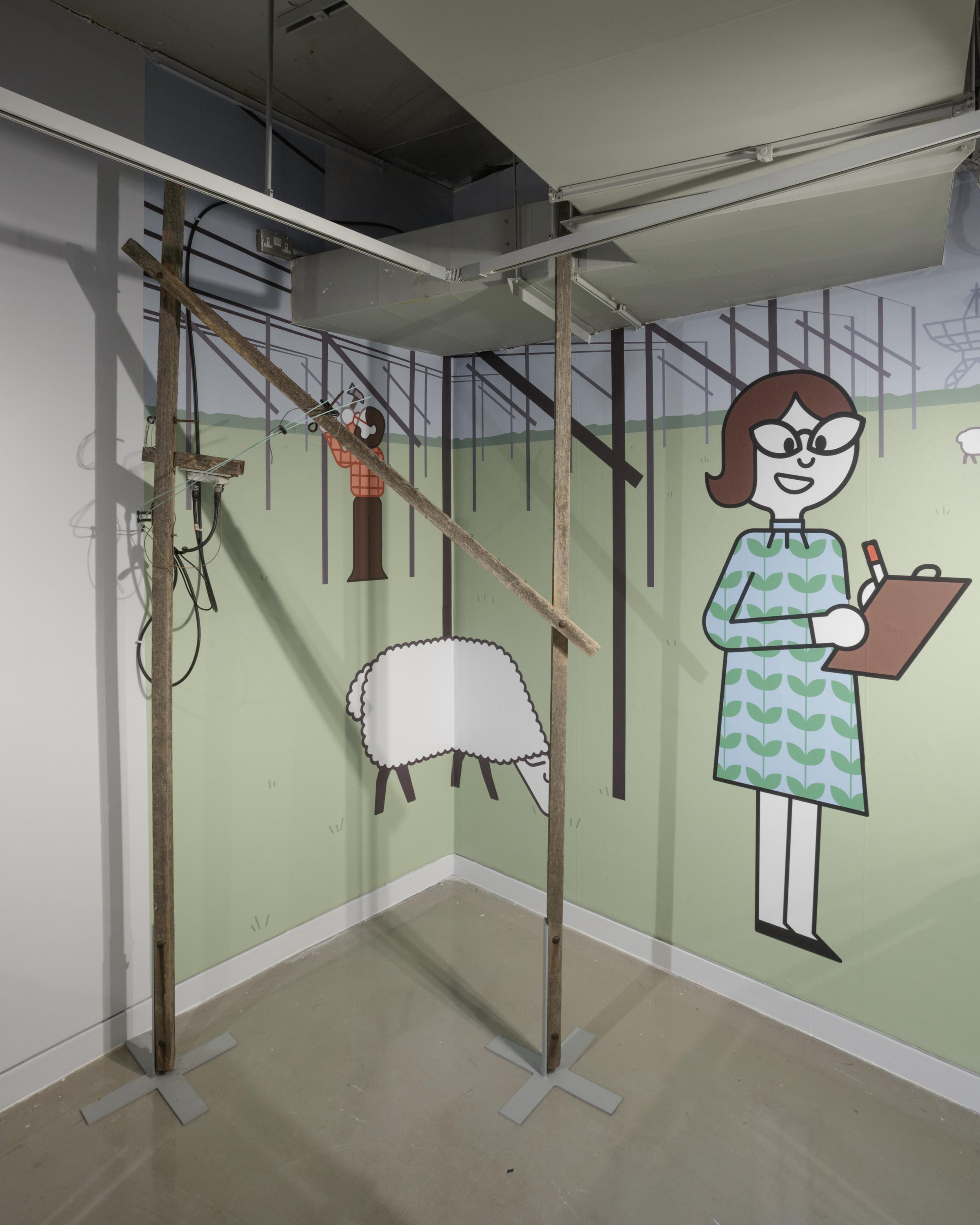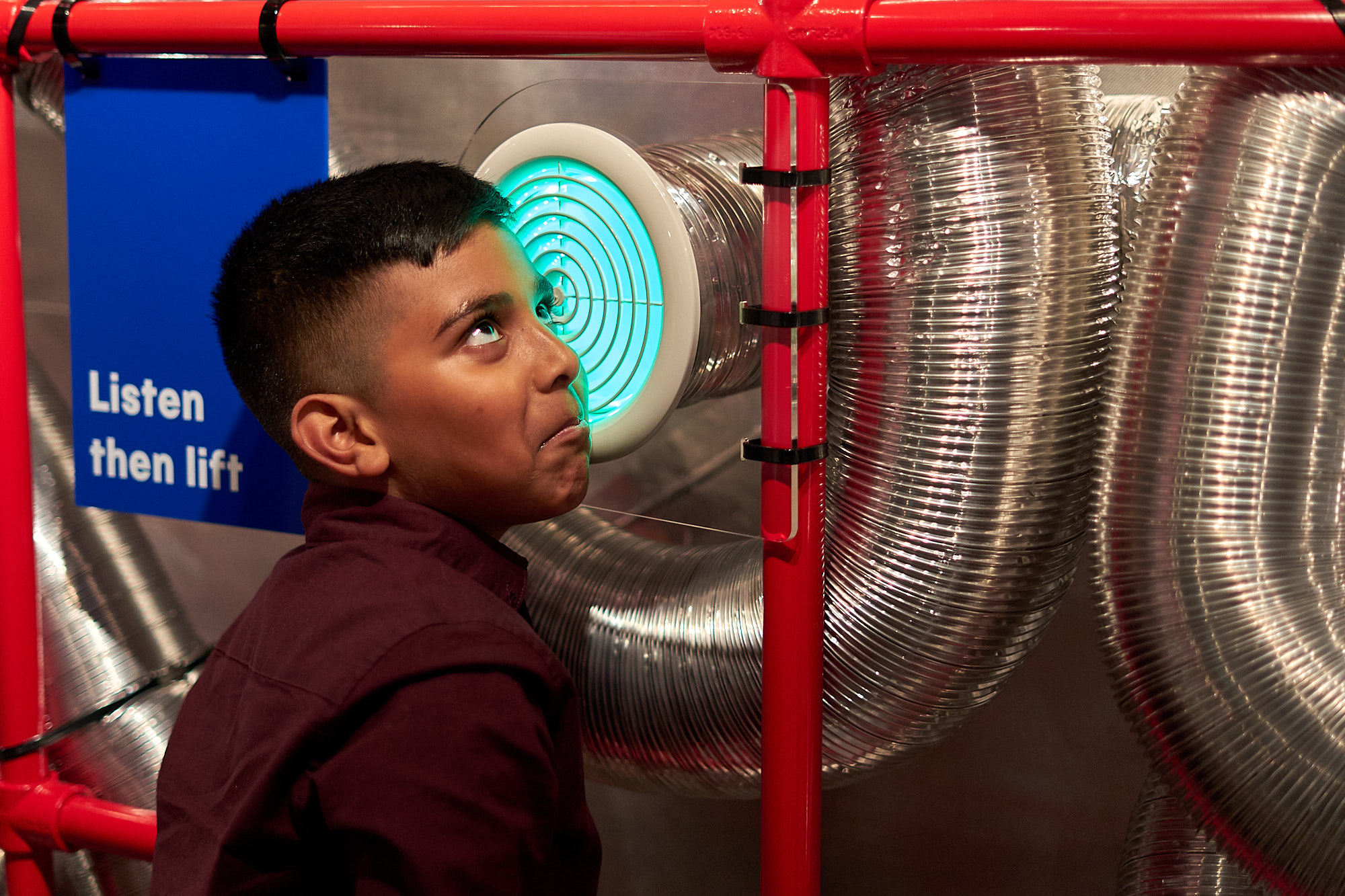Look up at the night’s sky, and you’d never know it was producing the universe’s oldest symphony. Every lunar body contributes its own unique harmony, each star telling its story in stellar waves. At the National Science and Media Museum exhibition Hello Universe, you can learn to hear the difference between a young, bright star and a colossal dying planet, or decipher the hum of a sprawling spiral galaxy from the screech of a hurtling comet.
Inaudible to the human ear, this stellar symphony can only be tuned into via a radio telescope. Visit Hello Universe and you’ll discover some of the most remarkable sounds scientists have found, from data collected with the multi-billion-pound Hubble telescope spinning in low-earth orbit, to a low-budget setup of wooden sticks, copper and electrical cable constructed by University of Cambridge researchers in 1967, a small piece of which is on display.

As part of the exhibition, you can watch a video in which student Jocelyn Bell explain how her astrophysics group harnessed this low-tech solution to discover a remarkably strong signal she dubbed ‘Little Green Man’. Was this a message beamed down from intelligent life in a far-away galaxy? You’ll have to see the video to find out.
10 years later, Ohio’s ‘Big Ear’ radio telescope captured a similarly powerful signal from the Sagittarius constellation. On display is the datasheet that shook astronomy volunteer Jerry Ehman so profoundly, he scrawled ‘wow!’ next to the abnormal collection of numbers, giving the mysterious ‘Wow! signal’ its name. Decide for yourself if you agree with those who still believe this unexplained signal to be an alien transmission, and find out how you can hunt your own. The open source ‘Search for Extraterrestrial Intelligence’ (SETI) software is scanning the skies from the exhibition floor as we speak…
Little green men aren’t the only ones sending out signals. We humans are determined to make our voices heard, playing our infinitesimally small part in the grand orchestra in the hope someone, somewhere might just hear us. Yet even if we could reach the ear of whatever intelligent life might be out there, what would we say and how might we be understood?

The exhibition reveals NASA’s attempts to reach out to other worlds, with a fascinating, accessible explanation of the time-capsule messages cast into the unknown during the Voyager missions. These golden vinyl records hold a snapshot of our existence in their grooves, waiting to be played. See a replica pressing on display and find out how to crack the code laid out for alien species yet to catch on to the latest vinyl trend.
You can hear a sample of the sounds scientists believed encapsulated life on our planet almost 50 years ago—from Chuck Berry to the Mbuiti tribe of the Ituri Rainforest. Would this selection look different today? Perhaps Ed Sheeran would make the cut… or would he help keep the aliens at bay? Bring the family and debate your ultimate planet Earth playlist.

Open your ears and your imagination to what’s out there. From potential alien transmissions to raging solar storms, Hello Universe will help you experience our universe as you’ve never heard it before.
Hello Universe is open at the National Science and Media Museum until 22 January 2020.
Very interesting blog